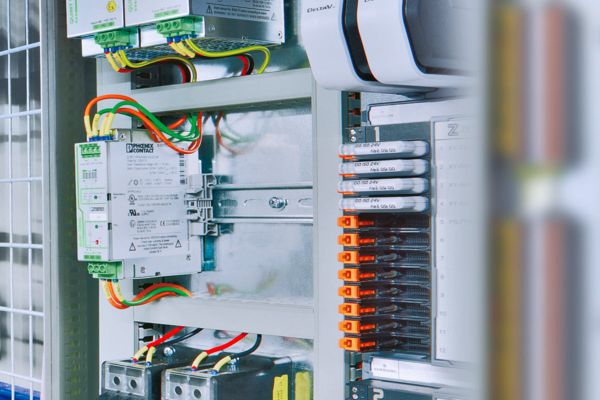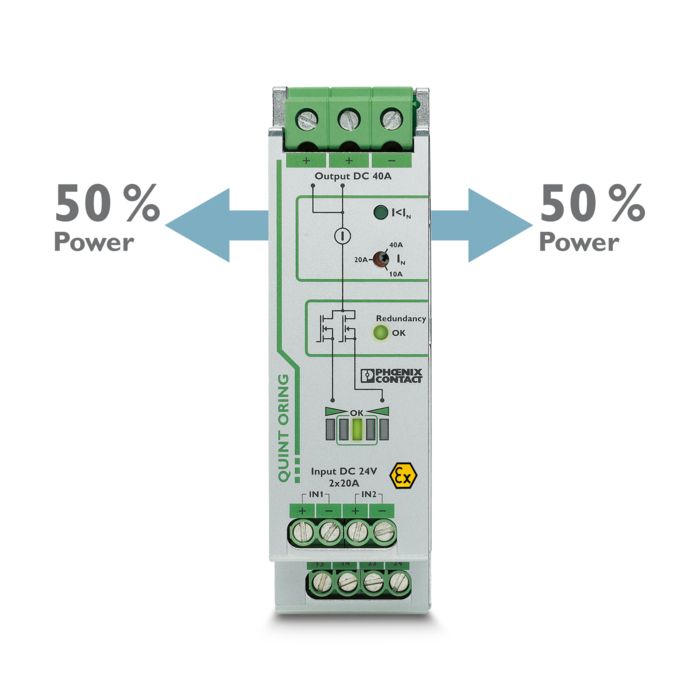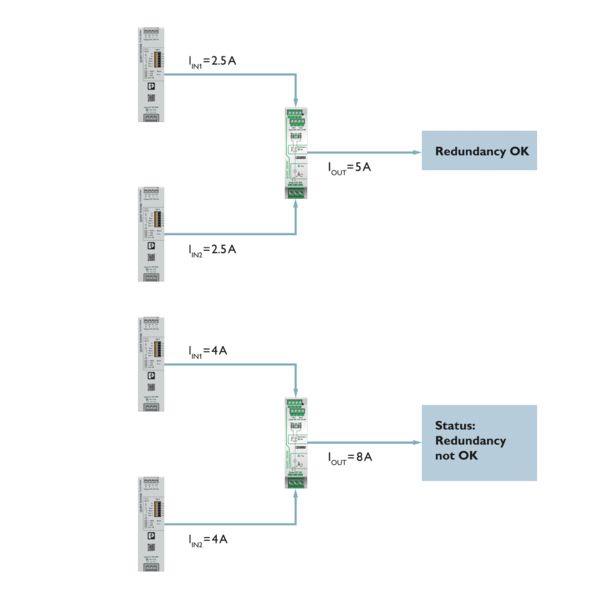ACB technology To ensure that the failure of a power supply unit does not result in system downtime, redundant power supply solutions are required in applications that place high demands on operational safety. The QUINT ORING active redundancy modules feature ACB Technology. The ACB Technology ensures symmetrical loading of the power supplies and therefore doubles the service life of the redundant system.

Maximizes the service life and saves energy
In systems with high safety requirements, redundant power supplies ensure that the failure of a power supply unit does not result in downtime. The ACB (Auto Current Balancing) Technology extends the service life of redundantly operated power supplies by evenly utilizing the power supply units.

Symmetrical distribution of the load current
Symmetrical loading of the power supplies
ACB Technology extends the service life of redundantly operated
power supplies by evenly utilizing the power supply units. As a result of asymmetries, the load is often supplied by just one power supply unit, while the other power supply unit runs in no-load operation. This results in a thermal load on the working power supply unit and therefore rapid aging. Thanks to the use of modern MOSFET technology, the resulting thermal load is reduced by up to 70%. This lower level of power dissipation ensures that all the control cabinet components stay cooler and the overall service life of the redundant system is doubled.
- Even load distribution for redundant power supplies
- Lower thermal load on both power supplies
- Service life of the redundant solution is doubled

Display of symmetrical utilization on the device
Signaling of symmetrical utilization
A bar graph indicates the symmetrical utilization of the power supplies. The user can see at a glance which input voltage is higher and therefore which power supply is under a greater load.
Various states can be easily read. Problems can be detected quickly and soon rectified. Their display and representation conform to NAMUR recommendations.
Detect and avoid critical states
The QUINT ORING modules monitor the load current and generate a warning as soon as a set value is exceeded. If the user connects additional loads to a redundant power supply as part of a system extension, this can result in the loss of redundancy.
For example, if two redundant power supplies, each with 5 A nominal current, supply a controller that requires 5 A and an additional load of 3 A is connected, this load will be supplied by the power supply’s power reserve. The required current of 8 A is provided without a voltage dip.
However, there is no longer any redundancy: If one of the two power supplies fails, the second device is no longer able to provide 8 A. The LED immediately signals to the system operator that redundancy is no longer available.

Example 1: redundancy OK, example 2: no redundancy
